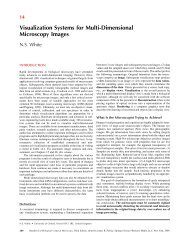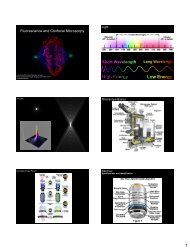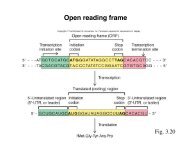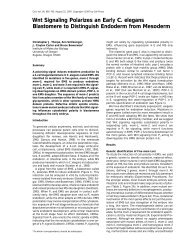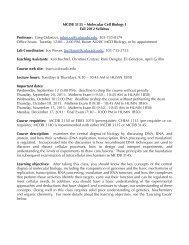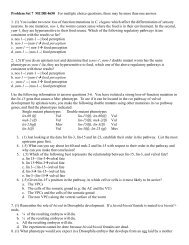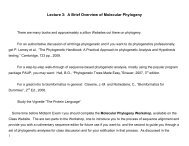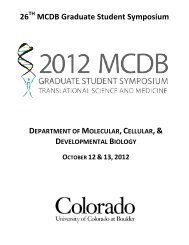MCDB 4777/5777 Molecular Neurobiology Lecture 1 ... - MCD Biology
MCDB 4777/5777 Molecular Neurobiology Lecture 1 ... - MCD Biology
MCDB 4777/5777 Molecular Neurobiology Lecture 1 ... - MCD Biology
You also want an ePaper? Increase the reach of your titles
YUMPU automatically turns print PDFs into web optimized ePapers that Google loves.
<strong><strong>MCD</strong>B</strong> <strong>4777</strong>/<strong>5777</strong><br />
<strong>Molecular</strong> <strong>Neurobiology</strong><br />
<strong>Lecture</strong> 1<br />
Course Overview, Neurons and Glia
Key questions for the course<br />
1: How is the nervous system organized?<br />
How do neurons work?<br />
2: How do neural networks carry and transmit information?<br />
3: How do neural networks allow us to sense and move?<br />
4: How does the nervous system arise?<br />
5: How does complex thought occur?<br />
What are the causes of common neural disorders?
Grades, Spring 2011<br />
A: 9<br />
A-:4<br />
B+: 5<br />
B: 12<br />
B-: 4<br />
C+: 6<br />
C: 9<br />
C-: 8<br />
D: 3<br />
F: 1<br />
61 students total
1.2 Examples of the rich variety of nerve cell morphologies found in humans. (Part 1)
1.5 Varieties of neuroglial cells. (Part 1)
1.3 The major light and electron microscopical features of neurons. (Part 4)
1.3 The major light and electron microscopical features of neurons. (Part 1)
1.3 The major light and electron microscopical features of neurons. (Part 5)
1.3 The major light and electron microscopical features of neurons. (Part 2)
1.3 The major light and electron microscopical features of neurons. (Part 3)
1.4 Distinctive arrangement of cytoskeletal elements in neurons. (Part 2)<br />
tubulin<br />
tubulin<br />
actin





